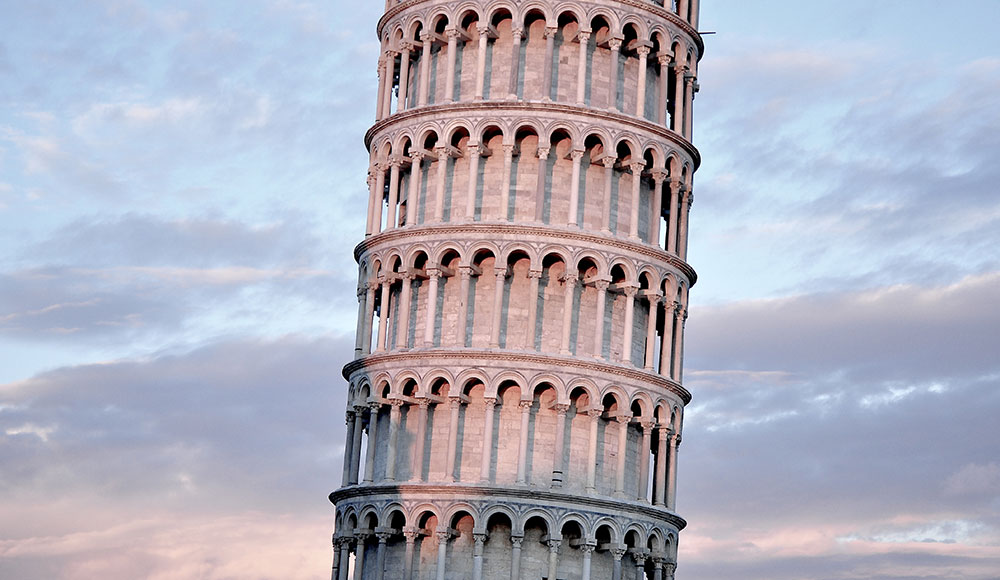How to create a digital twin of a historical building
A digital twin is a 3D virtual model of a physical object. Creating a digital twin of a historical building can help experts to study the structure in detail, without causing damage to the original. Digital twins can be created using 3D scanning technologies or computer-generated imagery (CGI).
CGI can also be used to create buildings that don’t exist yet or to create new versions of existing buildings. For example, if an architect wanted to propose changes to a historical building, they could create a 3D render of the proposed changes and compare it to the digital twin of the original.
The First Step is to Create a 3D Model of the Building
The first step is to create a 3D model of the building. This can be done using photographs, drawings, or laser scanning data. Once the 3D model is created, it can be used to create a 3D rendering which can then be used to create a virtual tour of the building.
This tour can be used to create an interactive experience for users, allowing them to explore the building in more detail. The tour can also create a 3D model of the interior of the building which can then be used to create a 3D rendering of the interior of the building.
Next, we input historical data about the building’s construction and alteration history
By inputting data about the building’s construction and alteration history, it is possible to create a 3D property render that can be used to study the building in detail. This can be helpful in determining which original features remain intact and which have been lost over time.
Additionally, by 3D house rendering the building’s current state, it is possible to identify any potential problems that could adversely affect its stability. By having a detailed 3D model of a historical building, we can better understand and protect our built heritage using digital technology without the potential of damaging the original.
Finally, physical samples from the building are analysed
These samples can be used to accurately recreate the building’s facade, interior layout, and any unique features. In addition, the samples can help to identify and track changes to the building over time.
In the past, creating a digital twin of a historical building was a time-consuming and expensive process that required 3D home rendering and 3D architectural render. However, advances in technology have made it possible to create an accurate 3D model using 3D architectural rendering.
By scanning the building and taking measurements, architects can create a highly detailed 3D model that captures every aspect of the structure.
Contact 3D Walkabout for accurate digital twins and CGI renders
At 3D Walkabout, we specialise in creating CGI renders and animations that are both realistic and breathtaking. Our team has the skills and experience to bring your vision to life. If you’re looking to create a digital twin of a historical building, we can help.
We use the latest technology to create highly detailed 3D models that capture all the intricate details of the original structure. We then add CGI elements such as people, lighting, and furnishing to create a realistic and lifelike environment. The result is an immersive and engaging experience that will leave your audience amazed.
Summary: How can digital twins used to create historial building?
Learn how to create a digital twin of a historical building, a 3D virtual model used for in-depth study without causing damage to the original structure.
Explore the methods of creating digital twins, including 3D scanning technologies and computer-generated imagery (CGI), which can also be used for envisioning proposed changes to existing buildings.
The initial step involves constructing a 3D model using photographs, drawings, or laser scanning data, leading to the development of a virtual tour and interactive experience for users to explore the building’s interior and exterior.
Discover the significance of inputting historical data about the building’s construction and alteration history, aiding in preserving original features and assessing stability issues.
Learn how physical samples from the building are analyzed to recreate its facade, interior layout, and unique features, as well as to track changes over time, using advanced technology for accurate 3D modeling.
FAQs
Why are 3D renders important for home builders?
3D house rendering offers many benefits for home builders. They showcase the full potential of a future home, giving precise visualisation of the project even before it begins. With a 3D house render, clients will avoid unwanted surprises and last-minute changes, and potential issues will be resolved before they become too difficult or expensive to fix.
How is 3D rendering used in architecture?
3D home rendering of an architectural design allows professionals to showcase their projects and communicate ideas long before the building gets underway. Architects can use 3D home renders to interact with their clients, other industry or design professionals, and the wider public, ultimately making the technical aspects of a project easier to understand.
What is 3D product visualisation?
3D product visualisation presents a product through 3D modelling and a virtual environment so that the product perfectly replicates its original version. Unlike 3D rendering, product visualisation goes beyond still 3D imagery, incorporating animations, panoramas, applications, and many other forms.
Which software is used for 3D rendering?
3D animations and rendering can be completed through CPU computation, hardware rendering with your computer’s video card, vector rendering, and cloud-based technology. There are many types of rendering software available on the market; these include Autodesk cloud rendering, Alias, Revit and Maya.
What is the difference between 3D rendering and 3D modelling?
The key difference between 3D rendering and 3D modelling is their processing within CGI. 3D modelling must occur before an image or object can be rendered, as modelling gives your computer the information it needs regarding size, shape and texture.
How is 3D rendering done?
There are several steps in the process of 3D rendering. Before the design is created, an agent will gather all the information they need regarding the building plans, fittings and fixtures. Using this information, they’ll create a white 3D model of the design which can be easily edited. Textures and materials are added before final changes are made.
What is the purpose of 3D rendering?
3D rendering is employed to provide dynamic, high-quality visuals. It’s particularly useful in real estate and interior design. 3D property renders allow potential buyers or clients to walk through a property, to view a realistic image of a redesigned space, or to settle on decisions and designs much more quickly and easily.
What is meant by 3D rendering?
3D rendering involves the creation of a 2D image from a 3D digital scene using computer software, specific gear, and specialised techniques. Images are generated using data specifying every element’s texture, colour and material. 3D rendering is, therefore, a detailed process incorporating clearly defined steps.
What are the payment terms?
Once we have given you a custom quote and you have informed us you are happy to go ahead we will issue an invoice and you will be required to pay a 50% deposit payment. Once we receive the deposit we’ll get started. After you have reviewed the final draft (watermarked) renders and confirmed you are happy then the remaining 50% balance is payable. As soon as this is received we’ll send out the final high resolution production version 3D renders.
Will my renders be suitable to print?
Yep. All the 3D renders we create are a very high resolution and suitable to print in most marketing material. The exception may be if you want them REALLY big, like the side of a building big. Often printing to this size will need vector based files. In that case be sure to let our team know at the start and we’ll adjust our workflows accordingly to accommodate this. It may cost a little extra but not too much. Be sure to sends us photos of the renders in location, it gives our designers a real boost to see their artwork blown up that big!
Do I need to submit CAD files to get a quote?
Nope. For a quote we just need 2D images so you can send those in any format – PDF, JPG, PNG, whatever. Along with the drawings we’ll need any associated documentation in regard to what you are looking for, the landscaping, site plan and surrounding area/address if important. We should then be able to give you a custom quote the same day as receiving your files and can then get started immediately if you want to go ahead.
Do you work inter-state and internationally?
Yes. We have offices in all Australian major metro areas including; Sydney, Melbourne, Perth, Brisbane and Adelaide. We offer 3D rendering services to clients nationwide and abroad. 99% of our business is done online, by email and over the phone and face-to-face meetings are rarely required. We have payment options in every major currency and can take payments by credit card or bank transfer. So wherever you are in the world get in touch and we can help create some awe-inspiring 3D renders for your business.
What types of renders do you offer?
We are a 3D rendering studio and as such we essentially offer every type of 3D render you can think of for all types of architectural structures. These include; interior renders, elevation renders, commercial renders, 360 panoramic renders, 3D floor plans and photomontages. As far as building types we’ve pretty much done renders for every building type imaginable, these include; house renders, apartment renders, multi-unit renders, industrial renders and more.
What is the turnaround time?
Can you model the surrounding area?
Yes, of course! Please just let us know when making your initial enquiry and we’ll request the details and provide a quote. The surrounding landscape can just be modelled as a generic environment eg suburban, urban, etc or we can match exact site plan landscaping details if required. In fact when we create external 360 panoramic renders we always model the surrounding area.
What are the 3D rendering prices?
Prices for 3D renders start from just a few hundred dollars. If you would like to receive a price list then just get in touch and we’ll send one across.
Why choose 3D Walkabout?
Because we’re the best! No seriously we offer premium quality photorealistic architectural 3D renders at very affordable rates. We work with many of Australia’s leading home builders, property developers and real estate agents and have completed thousands of renders to date. We also offer a personal, no hassle, customer service and we’re proud to say we’ve never had a client who wasn’t happy with what we have produced.


